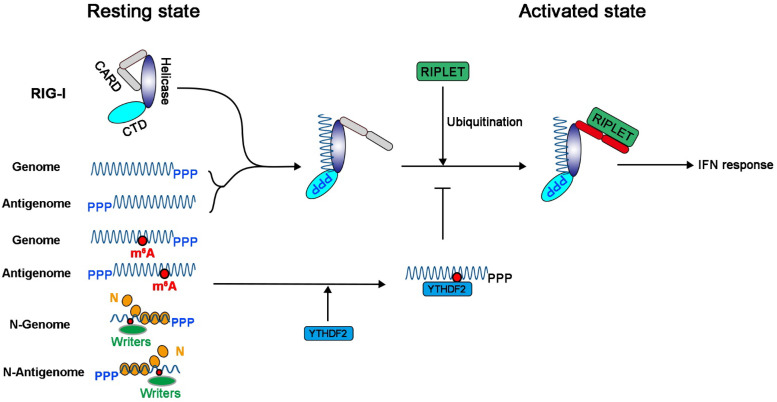FIG 10.
Model for how m6A methylation invades host innate immunity in NNS RNA viruses. The newly synthesized genome and antigenome of NNS RNA viruses are first methylated by m6A writer proteins, which are encapsidated by N protein to serve as a template for replication and transcription. Some of the genome and antigenome may not be encapsidated at an early stage in the virus replication cycle, particularly when the concentration of N protein is low. These unmodified antigenomes or genomes would be recognized by RIG-I to induce the IFN signaling pathway. m6A methylation in genome and antigenome prevents RIG-I binding, conformational change, oligomerization, and K63-linked polyubiquitination, which result in lower activation of MAVS and subsequent phosphorylation of IRF3, thereby inhibiting type I IFN production. In addition, YTHDF2 binds to the m6A-methylated genome and antigenome, which suppresses type I IFN signaling.

